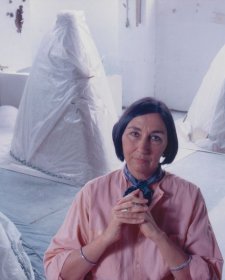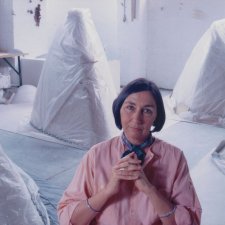Marea Gazzard AM (1928–2013), ceramic artist, trained at the East Sydney Technical College and London Central School for Arts and Craft. Emerging as one of England's leading ceramicists in the 1950s, she returned with her husband to Australia in 1960; together they set about building a modern house in Paddington, while starting the first urban action group in Sydney to help save the area. Unlike other ceramicists at the time, Gazzard used hand-building techniques to create sculptural forms inspired by Cycladic sculpture and pre-Colombian pottery. In 1973, with fibre artist Mona Hessing, Gazzard was one of the first craftspeople invited to exhibit at the National Gallery of Victoria. The exhibition, Clay + Fibre, generated much discussion about whether craft was art and accelerated acceptance of women artists. Through the 1970s and 1980s she exhibited large abstract works in a number of important group shows as well as solo exhibitions. Gazzard was also instrumental in the development of craft in Australia, including helping to set up the Crafts Council of Australia in 1971 and chairing the Crafts Board of the Australia Council in 1973. President of the World Crafts Council from 1980 to 1984, Gazzard was commissioned to create the bronze sculpture Mingarri: The Little Olgas (1988), which stands in the central Executive Courtyard of Parliament House, Canberra. A major retrospective of her work was held at the SH Ervin Gallery in 1994, accompanied by a book by Christine France, Marea Gazzard: Form and Clay. Gazzard's Bindu (2004) was commissioned for the Athens Olympic Games. The Art Gallery of New South Wales acquired her last major work, Selini I (2009), in 2012.
- About us
- Support the Gallery
- Venue hire
- Publications
- Research library
- Organisation chart
- Employment
- Contact us
- Make a booking
- Onsite programs
- Online programs
- School visit information
- Learning resources
- Little Darlings
- Professional learning







